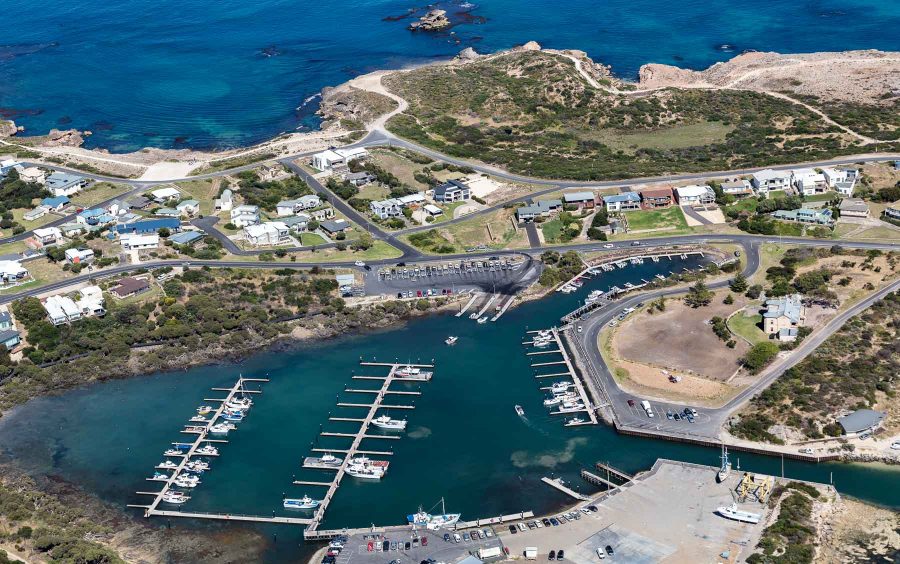Tucked away on South Australia's rugged Limestone Coast, Robe has a remarkable history... The picturesque seaside town sits on the shores of Guichen Bay, named in honour of a French Admiral after it was sighted by explorer Nicholas Baudin in 1802.
For at least 30,000 years, the area was home to the Bunganditj and Meintangk peoples. The first European settles arrived to the area in 1839 when Charles Bonney brought a mob of cattle over which opened up a new route from New South Wales to Adelaide.
The town itself was names after South Australian Governor Frederick Holt Robe, who chose the site for a new port and settlement in 1846, to serve as the government and commercial hub of the colony's South-East. The area was attracting a growing number of farmers who needed supplies and a convenient shipping route for their wool.
By 1859, Robe has become one of South Australia's busiest ports, and the second largest out-port for wool in South Australia. Within a period of just 10 years, more than one million pounds of wool passed through Robe on its way to Europe, with many ships sailing directly to London.
In the late 1850's, the town became one of the most remarkable treks in Australian history. Starting in 1856, thousands of Chinese migrants travelled through Robe on their way to the Victorian goldfields. In 1857 alone, some 15,000 or so Chinese landed in Robe direct from China, to avoid a poll tax imposed by the Victorian government. After staying for a few days, they gathered their supplies and set off on foot, walking more than 400km through the bush.
Surprisingly, Robe fell into a decline within just a few decades as trade collapsed due to rival ports opening up as well as a shrinking and often struggling farming industry. By the 1890's, Robe's life as a commercial trading port was over and the population had declined to less than 200 people, with many of the town's original stone buildings falling into disrepair.
Then in the 1900's, Robe reinvented itself as a holiday destination and major commercial fishing port, exporting Southern Rock Lobster to the World. The Governor of South Australia even set up residence at Karatta house for several seasons. But with more people starting to own cars in the 1920's & 1930's, it became popular with everyday families discovering the joys of 'motor camping.'
The fishing industry kicked off with a few small wooden boats in the late 1930's and grew rapidly after 1944 when Robe hosted an important meeting of Limestone Coast fishermen. They voted to form the South Australian Fishermans Co-Operative Limited (SAFCOL) which was the first of its kind in Australia, helping to ensure fairer prices and open up lucrative new markets. The Robe district was also the focal point of research that changed agriculture around the World. Scientists from the Commonwealth Scientific and Industrial Research Organisation (CSIRO) worked with a local farmer to uncover the cause and develop practical treatments for coast disease in sheep & cattle. The humble iron shed that housed these ground-breaking efforts still stands on the outskirts of the town.
The 1950s saw people beginning to build shacks and converting the towns old, empty cottages into holiday homes. They were followed by surfers in the 1960s looking for the perfect wave. The first Robe Easter Classic was held in 1968, making it one of the Worlds oldest continuously held surf competitions.
Now home to about 1,000 people, Robe remains one of South Australia's most popular holiday destinations, attracting visitors from across the country and overseas due to its unspoilt scenery, old-World charm, laidback lifestyle and popular eateries serving fresh local produce and premium local wines.
Still boasting more than 80 historic buildings and sites, you can walk the streets and coastal pathways, reliving Robe's remarkable history and the events that have shaped a town that time once forgot.
Welcome to the coast of Robe!
_____________________________________________________
Originally written by Liz Harfull - Freelance writer, PR consultant & author.
(http://www.lizharfull.com/celebrating-the-place-not-famous-for-robes/)




